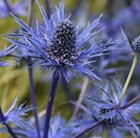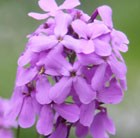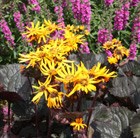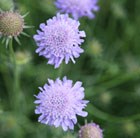Great plant offers at Crocus
by Diane - July 11th, 2012.Filed under: Crocus.
Crocus have tons of amazing plants for your garden. Treat yourself to some great value plants that provide colour and interest.
Don’t forget to protect newly planted plants from the evil slugs!

Campanula carpatica ‘Blaue Clips’ (bellflower) £6.99
Position: full sun or partial shade Soil: moist, well-drained soil Rate of growth: average to fast-growing Flowering period: July to September Hardiness: fully hardy These clump-forming, low-growing Carpathian bellflowers are perfect for softening the edges of a sunny, raised bed or rockery. They produce a profusion of blue, bell-shaped flowers on branched stems over a long period from June to September and rosettes of heart-shaped, mid-green leaves. A useful little perennial for filling in gaps. Garden care: Protect the tender foliage from slug damage using environmentally friendly slug pellets or beer traps. During the growing season water freely and deadhead with scissors to prolong flowering.

Campanula rotundifolia (harebell) £2.49
Position: full sun or partial shade Soil: moist, but well-drained soil Rate of growth: fast-growing Flowering period: July to August Flower colour: violet-blue Hardiness: fully hardy Spreading by underground rhizomes, this pretty perennial will form a neat clump of foliage in spring, which starts to die back as the upright flower stems emerge in midsummer. The violet-blue flowers resemble nodding bells that form in loose trusses at the top of the wiry stems. Elegant and easy to grow, it is a native of dry, grassy slopes throughout Europe and the UK, so it looks right at home in naturalised planting schemes. Garden care: Surface-sow onto good quality compost, which is kept moist but not wet and keep under glass (or in a polythene bag) until they germinate. When they are large enough to handle transplant into small pots and grow on before planting out in a sunny position. Protect the tender foliage from slug-damage using environmentally friendly slug pellets or beer traps. During the growing season water freely and apply a balanced liquid fertiliser each month. Sow: March-May or September-November Flowering: July-August Approximate quantity: 1000 seeds

Eryngium x zabelii ‘Jos Eijking’ (PBR) (sea holly) £8.49
Position: full sun Soil: moist, well-drained soil Rate of growth: average Flowering period: August to October Flower colour: steely blue Other features: superb foliage Hardiness: fully hardy This delightful sea holly has long lasting, bright metallic-blue flowers that arrive in mid to late summer and usually last well into the autumn. They have a strong architectural shape, so are best in uncrowded borders where they can really stand out on their own. Honey bees love their flowers so they are a perfect for adding to a sunny, wildlife-friendly garden. Garden care: Lift and divide large colonies in spring. Avoid the temptation to cut back the flowerheads in autumn as they provide interest in the winter garden.

Hesperis matronalis (sweet rocket) £1.79
Position: full sun or partial shade Soil: fertile, moist, well-drained Rate of Growth: average Flowering period: May to June Hardiness: fully hardy Sweet rocket is most at home in an informal herbaceous border, or when left to naturalise in a wildlife-friendly garden. The deliciously scented, pale lilac flowers form in loose clusters and are attractive to bees and other beneficial insects. Their perfume will fill the air late spring and early summer evenings. They are also edible and look great sprinkled over salads. Although relatively short-lived, it self-seeds freely. Garden care: Sow seed where it is to grow in late spring, after the worst of the frosts have passed. Prepare the bed well first and then surface sow, thinning the seedlings out as they grow to allow 30cm between each plant. Keep well watered and pinch out the growing tip to encourage bushier growth. Dead-heading regularly will help prolong the flowering season, but if you want them to self-seed, allow some of the seed heads to develop fully. Sow: March-May Flowering: May-July Approximate quantity: 500 seeds.

Liatris spicata ‘Kobold’ (gay feather) £7.99
Position: full sun Soil: light, moderately-fertile, well-drained soil Rate of growth: average Flowering period: August to September Hardiness: fully hardy Long-lasting spikes of deep magenta flowers appear from August to September above strap-shaped, fresh green leaves. The attractive, bottlebrush flowers open from the top downwards. This exotic-looking perennial will bring a vertic al accent and late summer colour to the middle of a sunny border. It makes an excellent cut flower and bees and butterflies love it, too. Garden care: Protect the young shoots from slug-damage using beer traps or environmentally-friendly slug pellets. Lift and divide congested colonies in spring, applying a mulch of well-rotted organic matter around the base of the plant.

Ligularia ‘Britt Marie Crawford (PBR)’ (golden groundsel) £9.99
Position: full sun with some midday shade Soil: fertile, moist soil Rate of growth: average to fast-growing Flowering period: July to September Hardiness: fully hardy Ligularia dentata are prized as much for their exotic foliage as for their flowers. In spring, large, heart-shaped, glossy, chocolate-maroon leaves with dark purple undersides appear, turning green as they mature. In summer , clusters of orange-yellow daisy-like flowers open above the foliage. This is an exciting new variety that is ideal for a moist, sunny border or bog garden, or beside water. It needs protection from strong midday sun. Garden care: Protect the young shoots from slug damage using beer traps or environmentally -friendly slug pellets. The plant must be kept moist; line the plant hole with plastic, making a couple of holes in the plastic for drainage. Water regularly during periods of drought. Lift and divide large clumps in spring or after flowering. Apply a generous 5-7cm mulch of well-rotted manure or garden compost in spring.

Onopordum acanthium (Scottish thistle) £9.99
Position: full sun Soil: fertile, well-drained, neutral to slightly alkaline soil Rate of growth: average Flowering period: July to August Hardiness: hardy biennial Large pale-purple or occasionally white, thistle-like flowerheads appear in July and August above spiny-toothed, grey-green leaves. This biennial, native Scotch thistle makes an architectural statement in a sunny gravel or wildlife garden. The ripening seedheads act as a magnet for goldfinches and the plant self-seeds freely. Garden care: Use beer traps or environmentally- friendly slug pellets to protect the tender young foliage against damage from slugs or snails.

Scabiosa ‘Butterfly Blue’ (pincushion flower) £7.99
Position: full sun Soil: moderately fertile, well-drained, neutral to slightly alkaline soil Rate of growth: average Flowering period: July to September Flower colour: lavender blue Other features: the flowers are highly attractive to butterflies and bees; valuable for fresh and dried flower arrangements Hardiness: fully hardy Lovely, lavender blue, pincushion like flowers from July to September held on delicate stems above clumps of lance shaped, grey green leaves. This long flowering blue scabious is ideal for a sunny, well drained rock garden or container planting. As its name suggests, the charming pincushion like flowers are highly attractive to butterflies. Garden care: Protect young plants from slug damage using environmentally friendly slug pellets or beer traps. Deadhead regularly to prolong flowering and cut back the faded flower stems in autumn.






